There are many opinions on how to secure my fabric seams. I mean, from flat lock to double overlock, I tried them all. And honestly, all of them are great to secure the fabric edge.
I thought, let’s do a comparison and find the best. So I sit down with the flatlock stitch vs overlock comparison.
So basically, the main difference between both stitches is,
Flatlock Vs Overlock
Flatlock stitches look like ladder-like lines on one side and loops on the other, while overlock stitches have a tight, wrapped edge finish that encloses the fabric edge.
Ok, but which is better? Let’s find out.
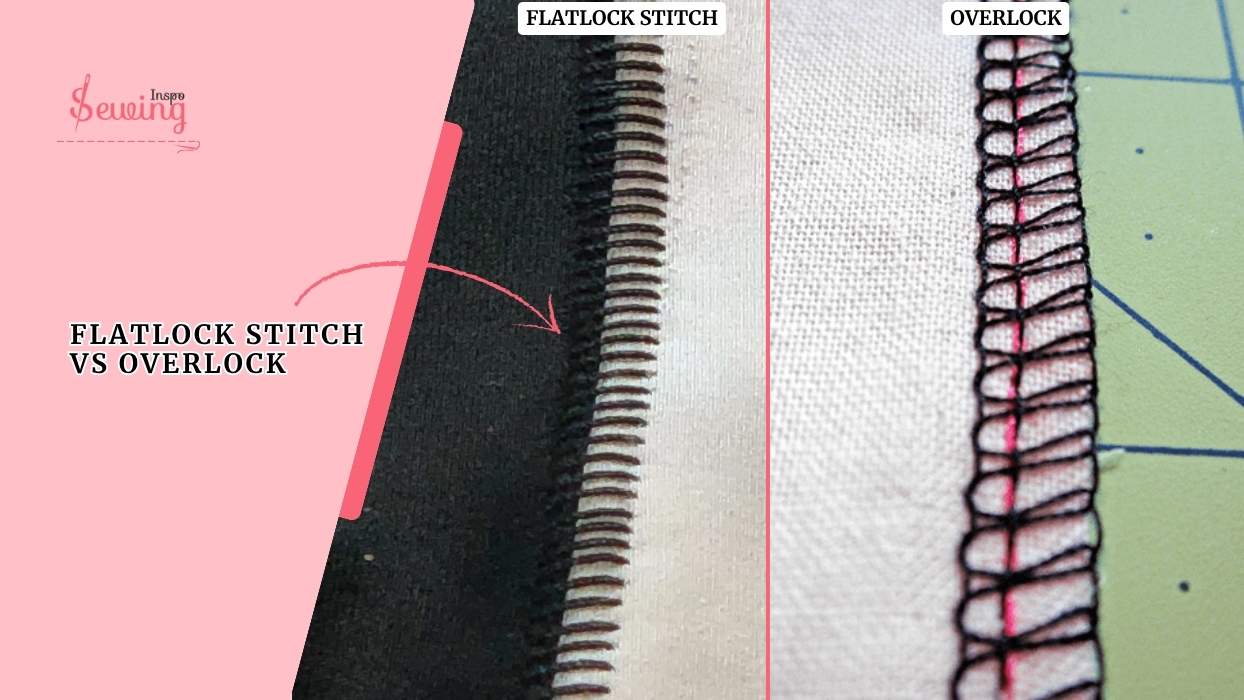
Table of Contents
Flatlock Vs Overlock The Key Difference
So, I’ve used both flatlock and overlock stitches,
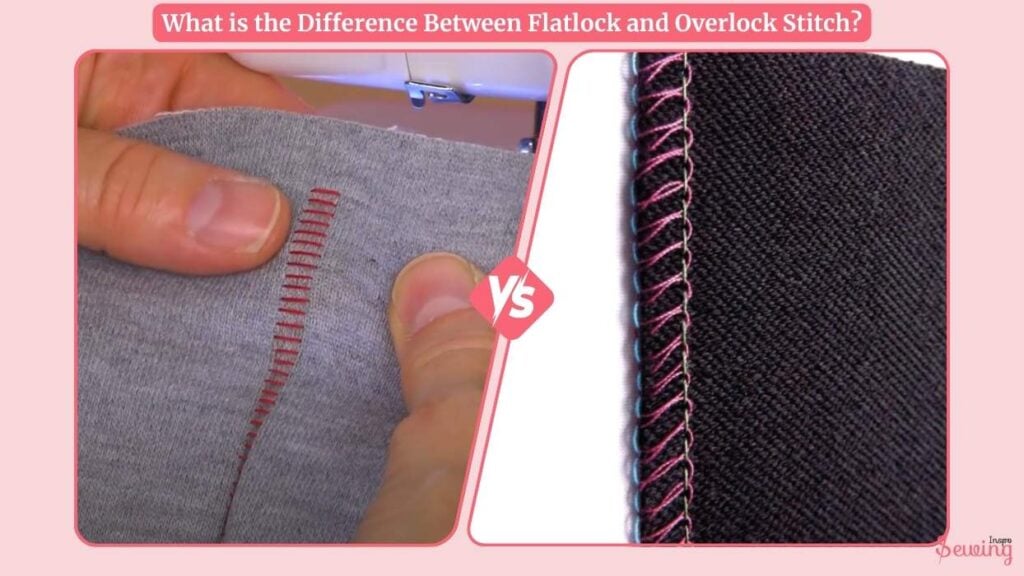
and while they sound similar, they do very different jobs on your fabric, just like flatlock vs coverstitch.
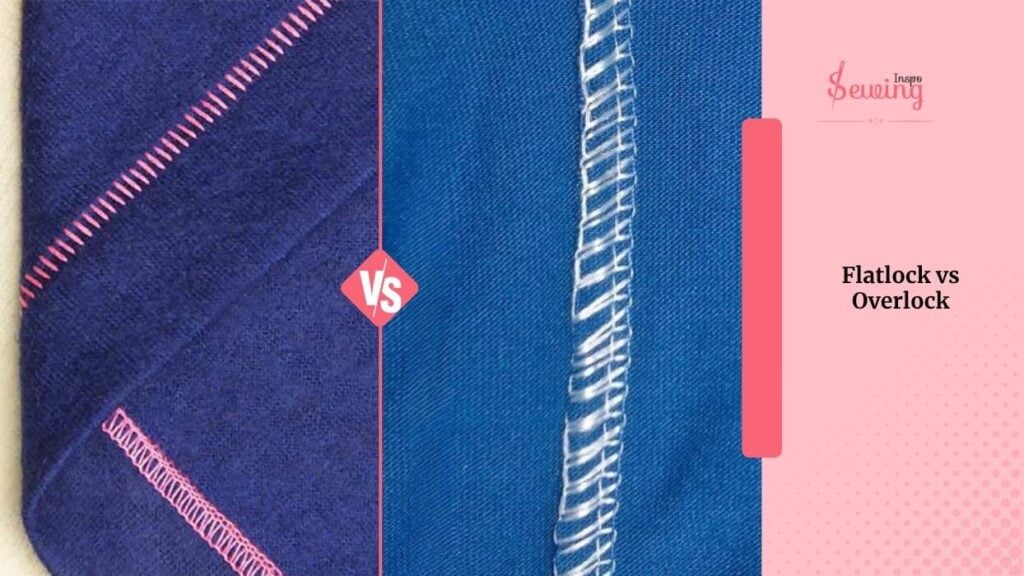
Overlock Stitch
Overlock is a perfect stitch for seaming and edge finishing. It trims the edge, encloses the raw seam, and keeps your fabric from fraying. It’s super common in garment construction—especially for knits—and it gives a neat, professional finish inside clothes.
I use this when I want seams to be secure, strong, and tidy. However, they still appear to have “inside seams.”
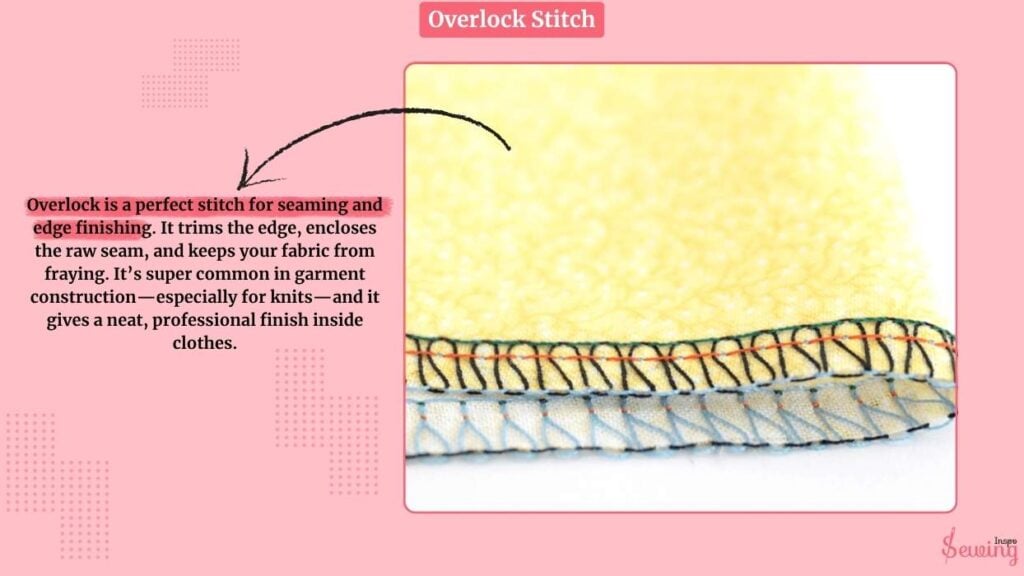
What is a flatlock stitch?
Now, flatlock is more decorative and sits completely flat, so there’s no seam bulk. You’ll see this on activewear, such as yoga pants or t-shirts. It is especially where you want seams to be visible and comfortable against the skin.
But after seeing this, don’t scream that’s what is a lockstitch sewing machine. Cause that’s not true. Flatlock and lock are different.
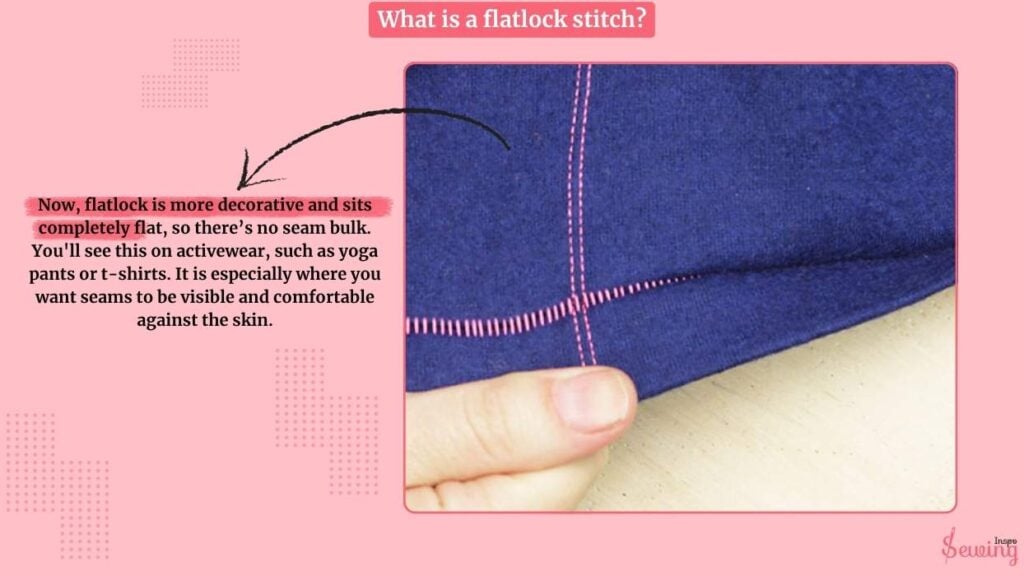
When to use a flatlock stitch? Well,
I use it I want a cool, flat seam that’s visible from the outside (or just comfy on the inside), flatlock is my pick.
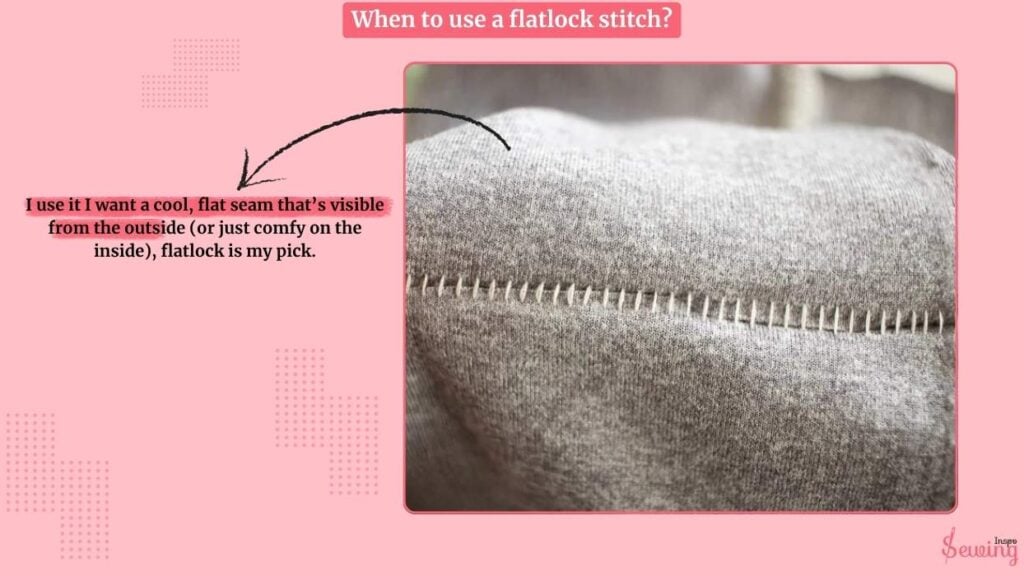
Flatlock Sewing Machine: Features and Uses
A flatlock sewing machine is designed to create flat, strong seams where the fabric edges meet without overlapping.
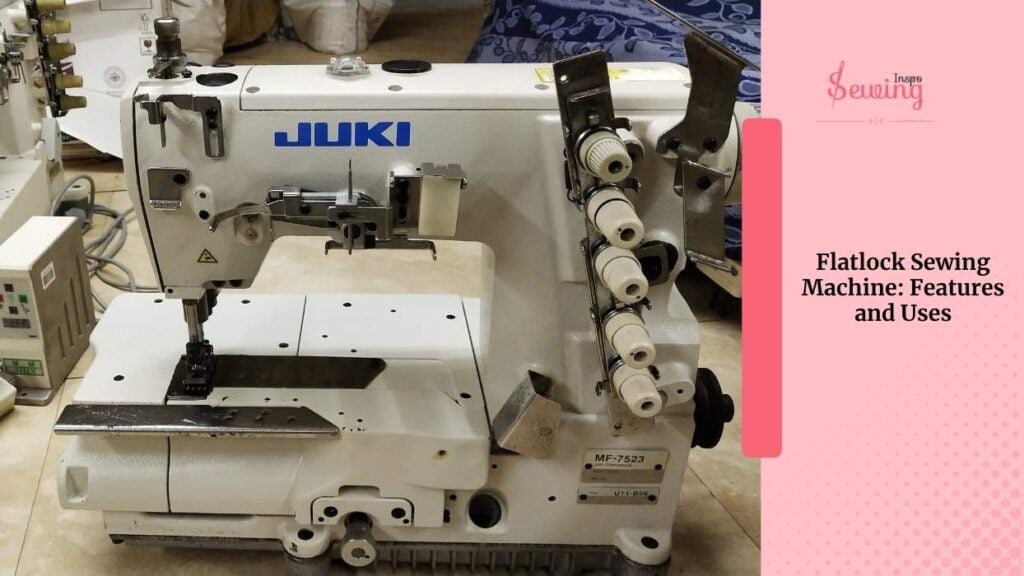
This stitch is ideal for activewear, knit garments, and sportswear, as it allows for stretch and comfort while minimising bulk.
Flatlock Sewing Machine Fabric
Flatlock stitching works best on knits, stretchy fabrics, and athletic wear materials because the seam stays flat, flexible, and comfortable without adding bulk. That’s why you’ll often see it in yoga pants, leggings, swimwear, and sports jerseys. It prevents chafing and feels smooth.
On the other hand, it’s not the best choice for thick, heavy fabrics like denim, canvas, or upholstery.
Those require sturdier seams for strength rather than flexibility. Flatlock is all about comfort and stretch, not brute force.
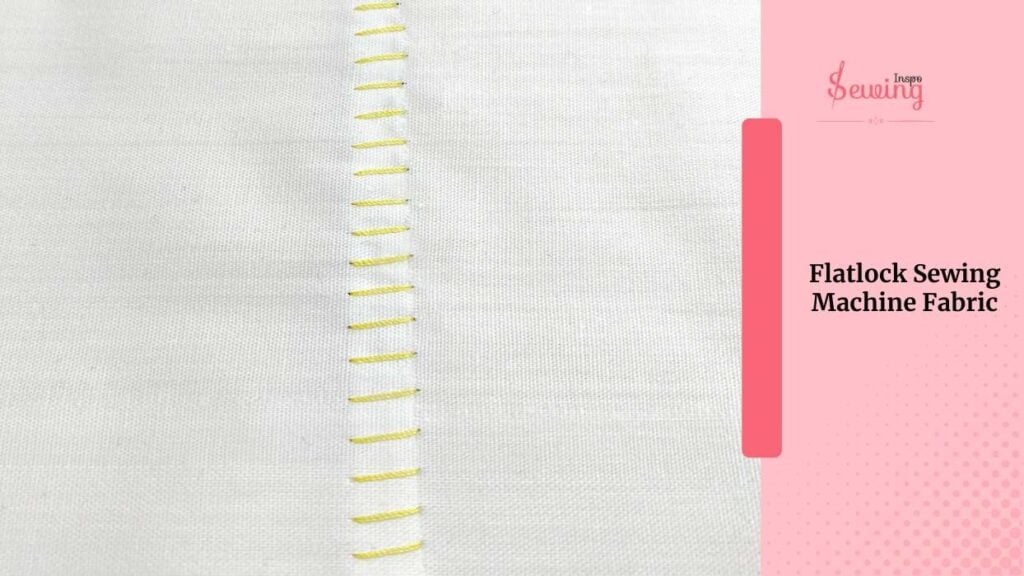
In Short: Flatlock Stitch Vs Overlock
I think by now you know what’s set them apart but still here is the glance of difference:
| Feature | Overlock Stitch | Flatlock Stitch |
| Main Use | Seaming & edge finishing | Decorative seams & flat joins |
| Seam Bulk | Has a little seam allowance | Lies completely flat |
| Appearance | Hidden inside garments | Often used on the outside |
| Comfort | Can be felt slightly | Very soft and skin-friendly |
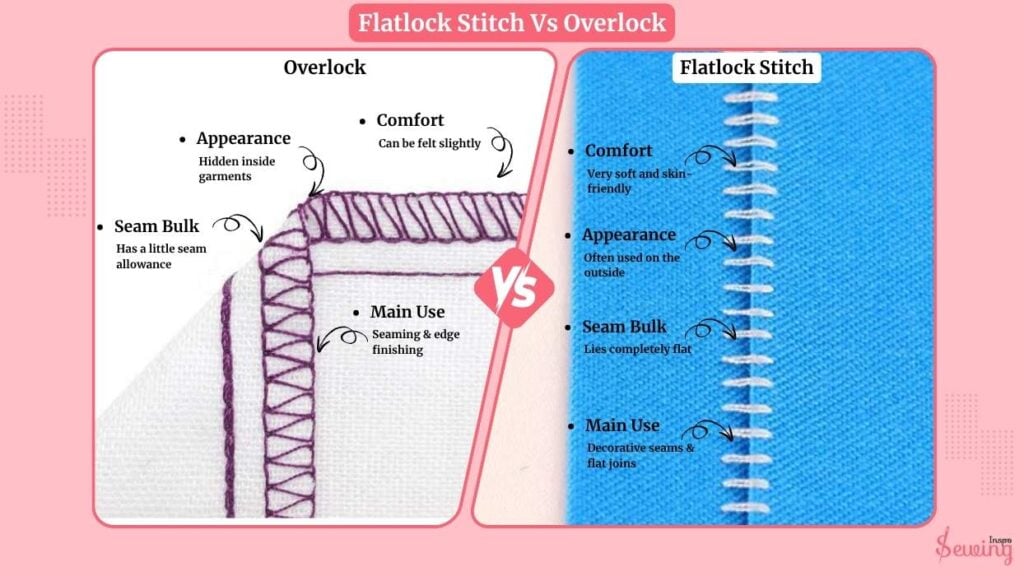
Which Is Stronger Between The Flatlock Stitch Vs Overlock?
If we’re talking pure strength and durability, the overlock stitch wins—no question.
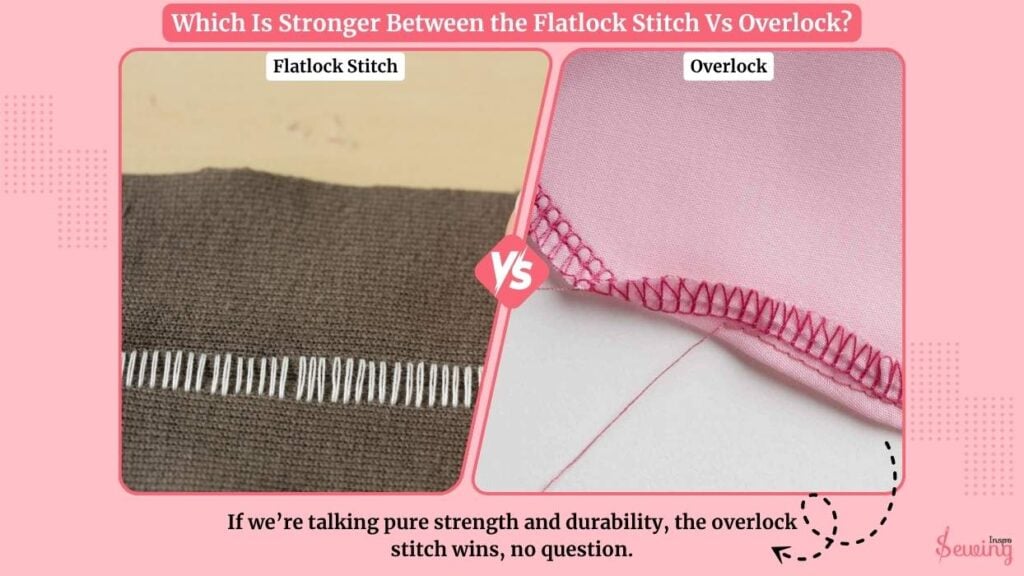
Flatlock is great when you want a flat, flexible seam (like in yoga pants or T-shirts). However, it sacrifices some strength to maintain a low profile. It’s comfy and neat, but not the toughest. Even 4 thread flatlock stitch isn’t stronger than an overlock.
On the other hand,
Overlock is built for strong, reinforced seams. It wraps around the raw edge, trims it neatly, and secures everything in place. I always use it when I want the seam to withstand tugging, stretching, or repeated washing.
Especially, a 4-thread overlock stitch is often considered the strongest machine stitch!
So,
If I’m sewing something that’s going to take a beating, like activewear or tight-fit garments, I go with overlock. But if I’m aiming for comfort, stretch, and a polished outer finish? Flatlock’s my catch.
When to Use Flatlock vs Overlock Stitches?
A flatlock stitch and an overlock stitch both finish fabric edges and prevent fraying. But they shine in different situations. And knowing when to use which can make or break your project’s finish.
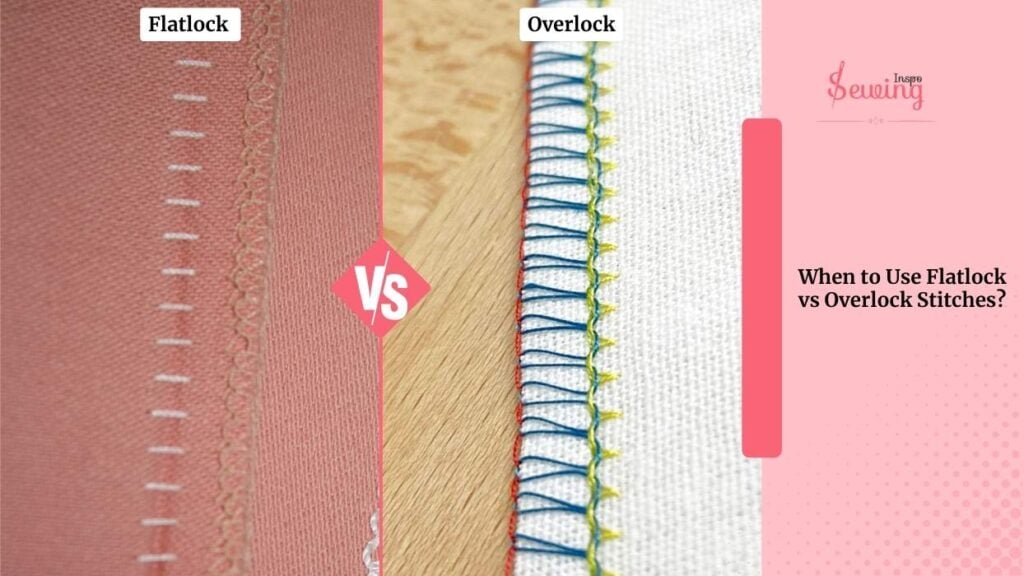
Flatlock stitch is best when you want:
- Seams that lay completely flat
- Stretch without tightness
- Decorative, visible seams
Overlock stitch is best when you want:
- Quick, strong seam finishing
- Durability for everyday clothing, home décor, or upholstery.
- Neat inside seams on woven or knit fabrics without worrying about bulk.
Rule of thumb,
Flatlock for stretchy, close-fitting garments where comfort and flexibility matter. Overlock for general sewing, edge finishing, and fast, strong seams.
What Is The Difference Between A Lock Stitch And An Overlock Sewing Machine?
I was talking about stitches for so long. But what about the sewing machine? Is it the same or different? Actually, the machine differs too. For intense,
A lock stitch machine creates straight, strong seams using two threads. An overlock machine (or serger), on the other hand, uses multiple threads and trims the fabric edge as it stitches.
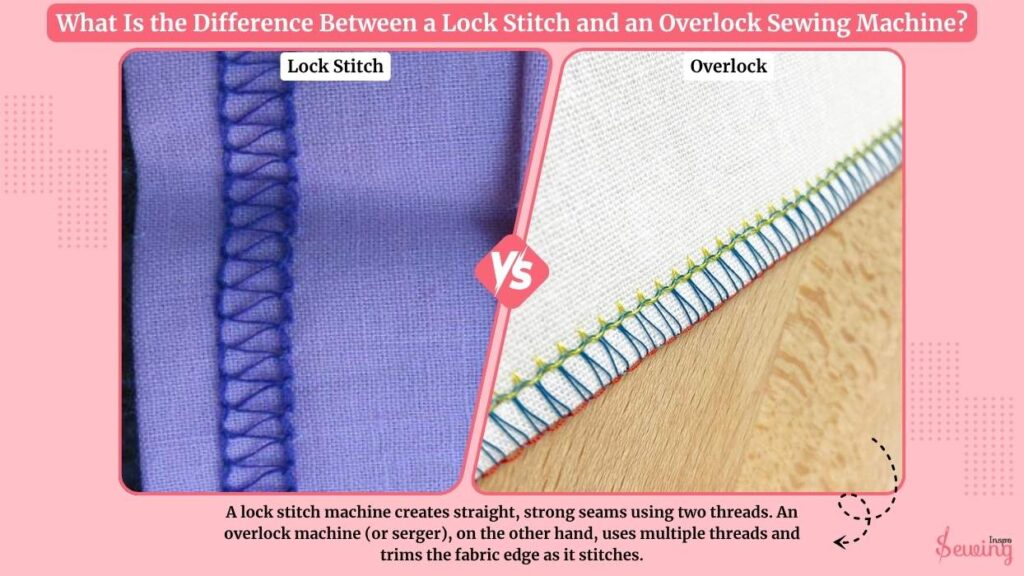
So basically, lock stitch builds the garment, and overlock finishes it off.
If you like this comparison, then read the coverstitch vs overlock comparison too.
Frequently Asked Questions
Can I use a flatlock stitch to finish raw fabric edges?
Technically yes, but it’s not the best choice. Flatlock is meant for joining fabric panels flat, not just edge finishing. Overlock is your go-to for clean, fray-proof edges.
Do both stitches stretch with the fabric?
Yep! Both stitches are stretch-friendly, especially when done on knits. But flatlock gives more flexibility with a flatter feel, while overlock offers better strength.
Can I do both stitches on the same serger?
Most sergers with adjustable tension and differential feed can do both—flatlock just needs different thread tension and settings.
Conclusion
Both stitches have their own place to shine. overlock when I need strength and clean edges, and flatlock when I want that comfy, seamless feel. Once you’ve tried both, it’s honestly hard to pick a favorite. 😉


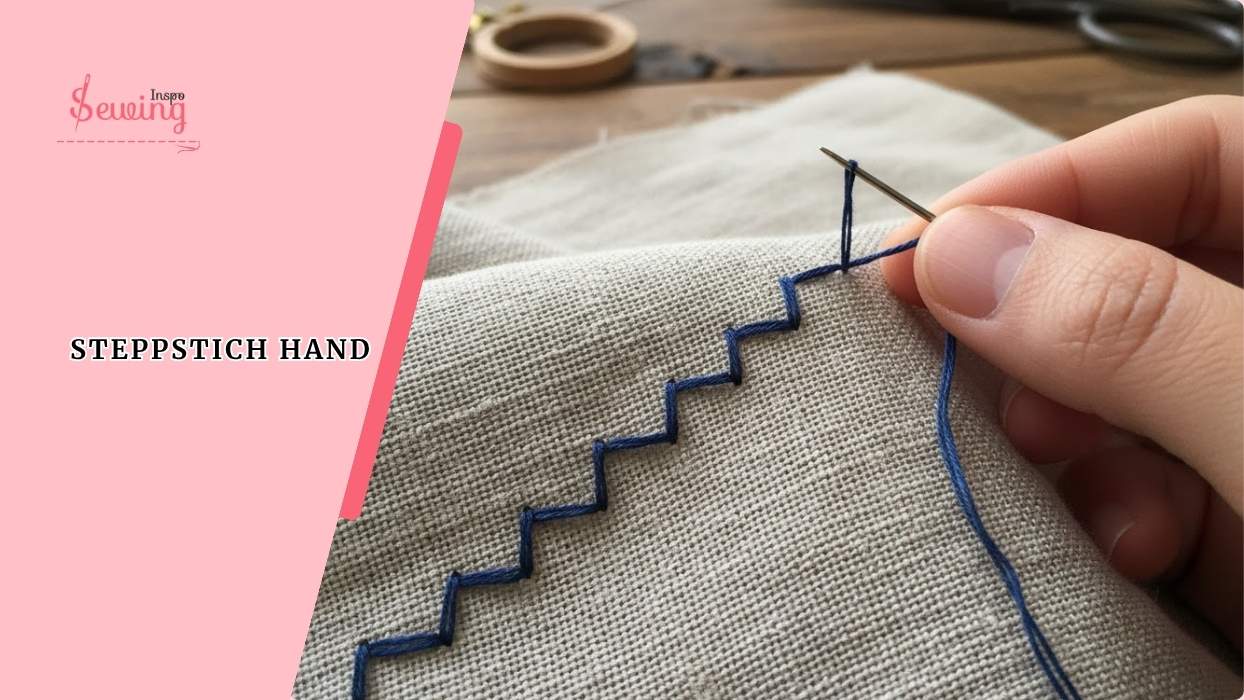
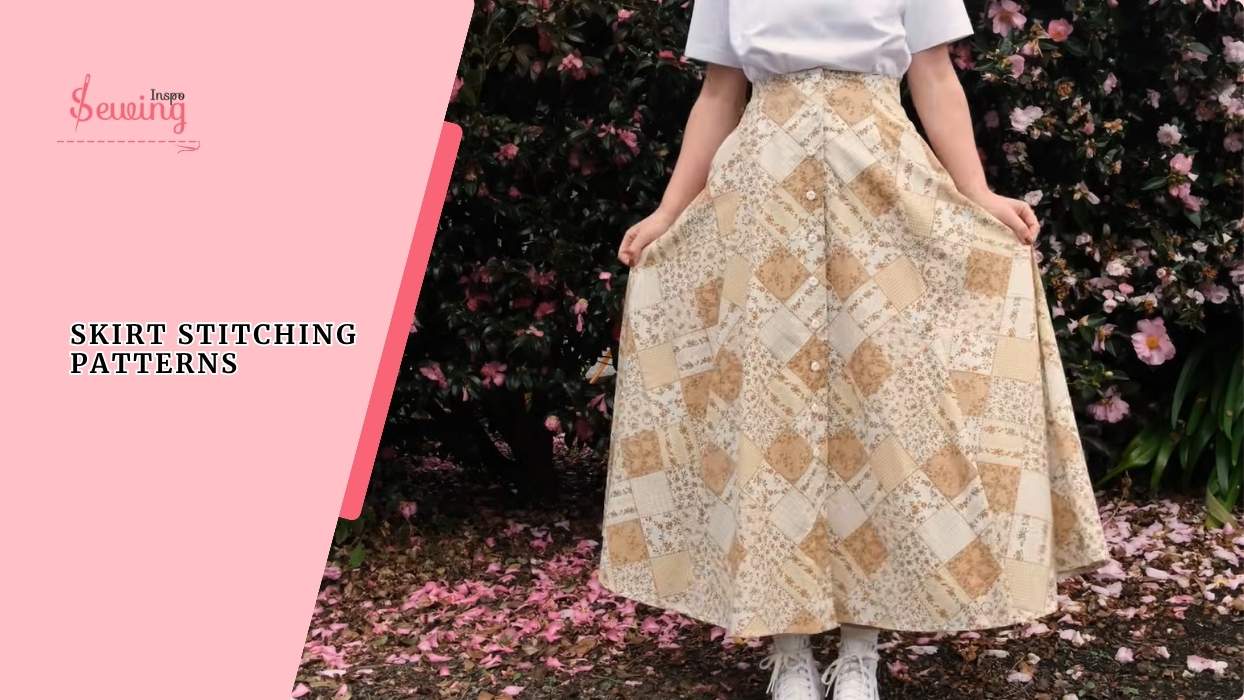
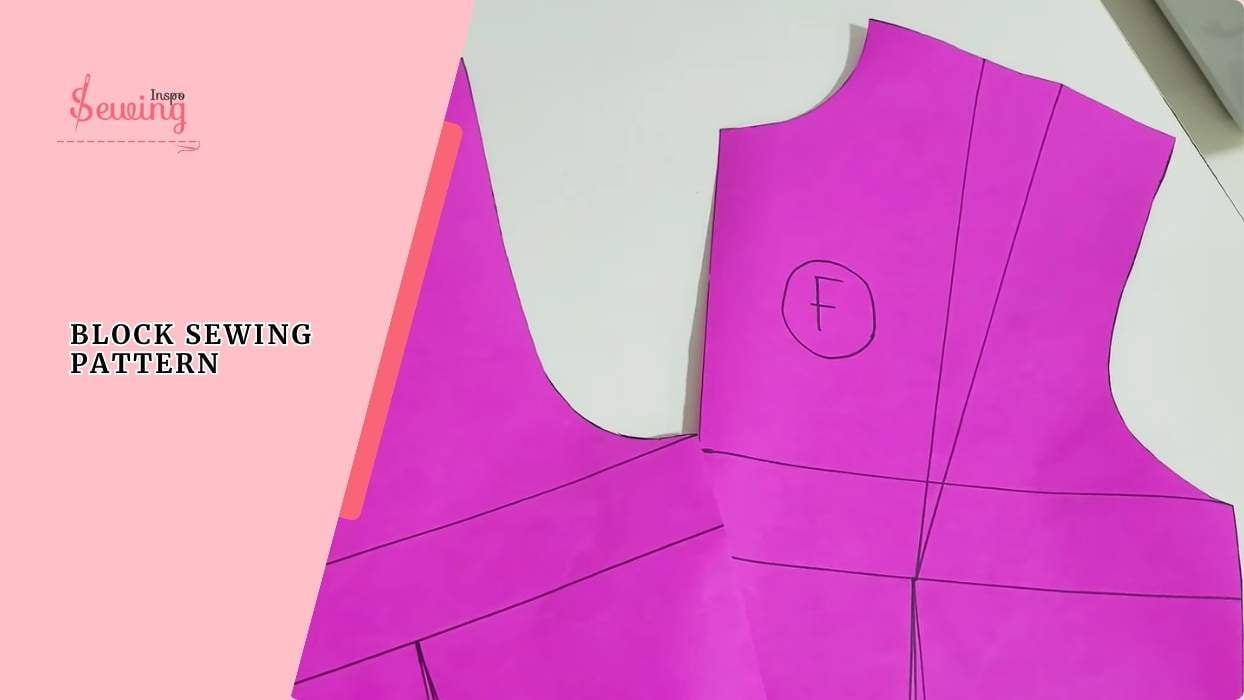
Leave a Reply